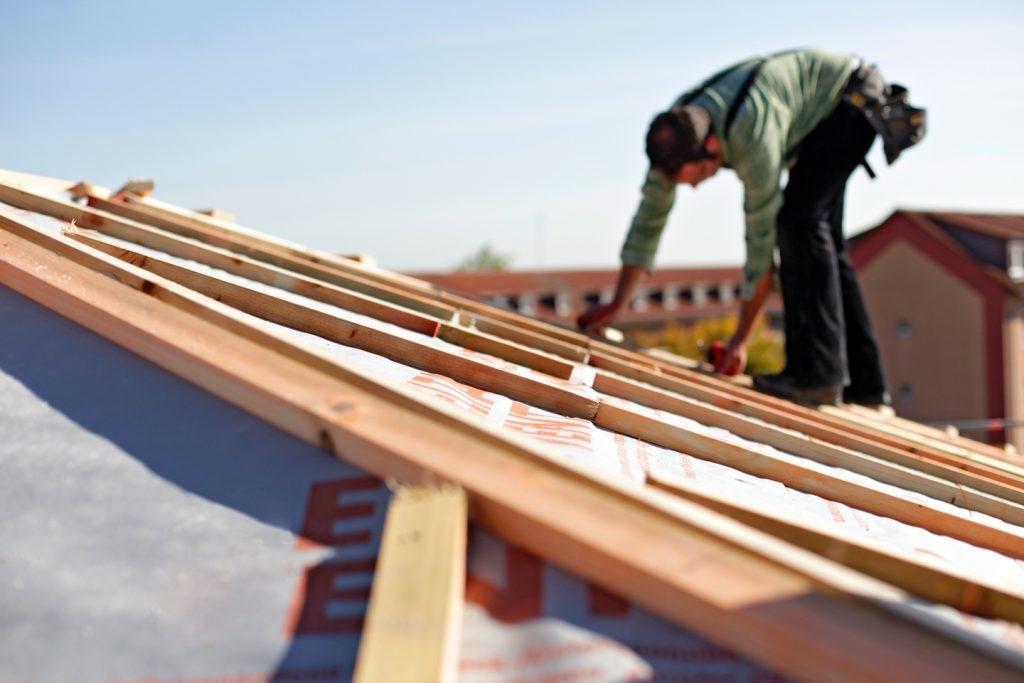A new roof installation is a significant home improvement project that can enhance your property’s value, energy efficiency, and curb appeal. However, it’s essential to understand the timeline for this project to plan accordingly. In this article, we’ll provide you with insights into how long it typically takes to install a new roof, along with factors that can influence the duration of the process.

Factors Affecting the Roof Installation Timeline
Roof Size and Complexity
The size and complexity of your roof are primary factors that impact the installation timeline. A standard-sized, uncomplicated roof may take less time to install than a larger, intricately designed one.
1. Roof Material
The type of roofing material you choose can significantly affect the installation timeline. Common roofing materials include asphalt shingles, metal, wood shakes, and tile. Each material has its installation requirements, with some being quicker to install than others.
2. Weather Conditions
Weather plays a critical role in roof installation. Inclement weather, such as rain, snow, or extreme heat, can delay the project. Roofing contractors typically prefer working in mild, dry weather conditions.
3. Contractor’s Team and Equipment
The efficiency of the roofing contractor’s team and the equipment they use can impact the installation timeline. An experienced and well-equipped crew can complete the project more efficiently.
4. Roof Deck Condition
The condition of the roof deck (the surface beneath the roofing material) can influence the timeline. If the deck requires repairs or replacement, it will extend the installation process.
Typical Roof Installation Timeline
1. Preparation (1-2 days)
The first step in the roof installation process involves preparing the area. This includes removing the old roofing material, inspecting the roof deck for damage, and making any necessary repairs. Preparation typically takes one to two days.
2. Underlayment and Flashing (1-2 days)
Once the roof is prepared, the next step is to install the underlayment and flashing. Underlayment provides an additional layer of protection against moisture, while flashing helps prevent water infiltration around roof penetrations like chimneys and vents. This step typically takes one to two days.
3. Roofing Material Installation (2-5 days)
The duration of this step depends on the roofing material you choose. Asphalt shingles are among the quickest to install, typically taking two to three days for an average-sized roof. Metal roofing may take slightly longer due to the precision required in installation. Wood shakes and tile can take longer, often around five days or more, due to their intricate installation patterns.
4. Cleanup and Inspection (1-2 days)
After the roofing material is installed, the crew will perform a thorough cleanup of the site, removing debris and ensuring the area is safe. An inspection is conducted to check for any issues that need addressing. This step usually takes one to two days.
Total Timeline
In total, a new roof installation can take approximately one to two weeks, depending on the factors mentioned above. Keep in mind that unforeseen issues, like weather delays or unexpected repairs, can extend the timeline.
Conclusion
Installing a new roof is a crucial investment in your home’s long-term integrity and value. Understanding the typical timeline for roof installation and the factors that can influence it will help you plan accordingly and ensure a smooth and successful project. To get a precise estimate for your specific situation, it’s advisable to consult with a reputable roofing contractor who can assess your roof’s unique characteristics and provide a detailed timeline and cost estimate.



Leave a Reply